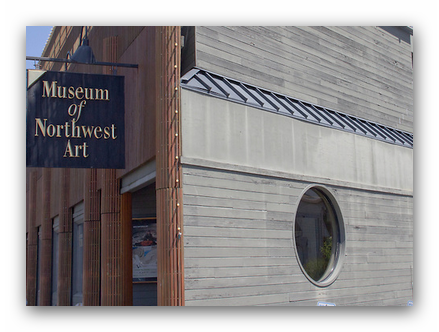Jan 14 2017 - Mar 26 2017
La Conner, WA
Paul Havas: A Life of Painting honors the forty-year career of an artist known for his large-scale landscapes and cityscapes. Born, raised, and educated on the East Coast, Paul Havas (1940-2012) came to the Northwest for graduate school at the University of Washington and ultimately became one of the major painters of the region. A studio in the Collins Building in Seattle in the 1970s introduced Havas to a community of artists and inspiration that stayed with him throughout his prolific career. For a decade, he had a studio and home on Fir Island in Skagit Valley, and his paintings reflected the wide expanses of farmland, river, and sky distinct to that area.
After he moved back to Seattle in 1983, Havas created a series of paintings set in the city: night scenes of buildings and empty streets; daytime panoramas that incorporated the angles and geometry of the city plan; and tall, narrow paintings capturing glimpses of urban vistas. Nature was always an inspiration, and Havas made many trips into the mountains to fish, hike, and climb. Additionally, Havas and fellow artist Clayton James made numerous extended trips, searching out painting sites along the back roads of eastern Washington, Oregon, and the Pacific Coast.
Beneath it all, Havas had a deep knowledge of European and American art, and his travels outside of the Northwest and early teaching positions informed his painting as much as his immediate surroundings. His final series of paintings, set in the coastal area near Willapa Bay, distill the essence of land and water and architecture, a culmination of decades-long devotion to painting, to capturing light, and to conveying a sense of place.
Exhibition overview from museum website
Whether you go or not, in conjunction with MoNA's exhibition, a publication titled Paul Havas draws on Havas's archive of writings, letters, and documentary photographs, as well as accounts and interviews with critics, curators, fellow artists, and friends to set the artist in a perspective of Pacific Northwest and American art history. The result is a lively tale of fly-fishing, rural cabins, sophisticated city life, and doggedly consistent work habits in studios in Seattle and the Skagit Valley. Quiet yet friendly, like his appealing paintings, Paul Havas is revealed as thoughtful and witty, with serious ideas about art, culture, and his own position in contemporary art. Readers are sure to enjoy this lavishly illustrated volume with extensive color plates, useful contextual images, and historical documentary photographs. With an introduction by longtime former Seattle gallery owner Francine Seders and a comprehensive essay by art critic Matthew Kangas, the book informs the exhibition, with groupings of paintings by theme: farmland, city, geology, wetlands, islands, and coast. Early works, sketches, and notebooks augment the paintings on view, and provide a closer, deeper look at a painter whose work transcended the landscapes he portrayed. The art of Paul Havas (1940–2012) is one of natural beauty, formal control, and unusual colors. Havas settled in the Puget Sound region in 1965 and went on to create a body of work dominated by oil paintings and drawings of landscapes and cityscapes, attracting admiring critical attention and considerable acquisitions by important museums.
Exhibition Venues & Dates
Jan 14 2017 - Mar 26 2017
La Conner, WA

